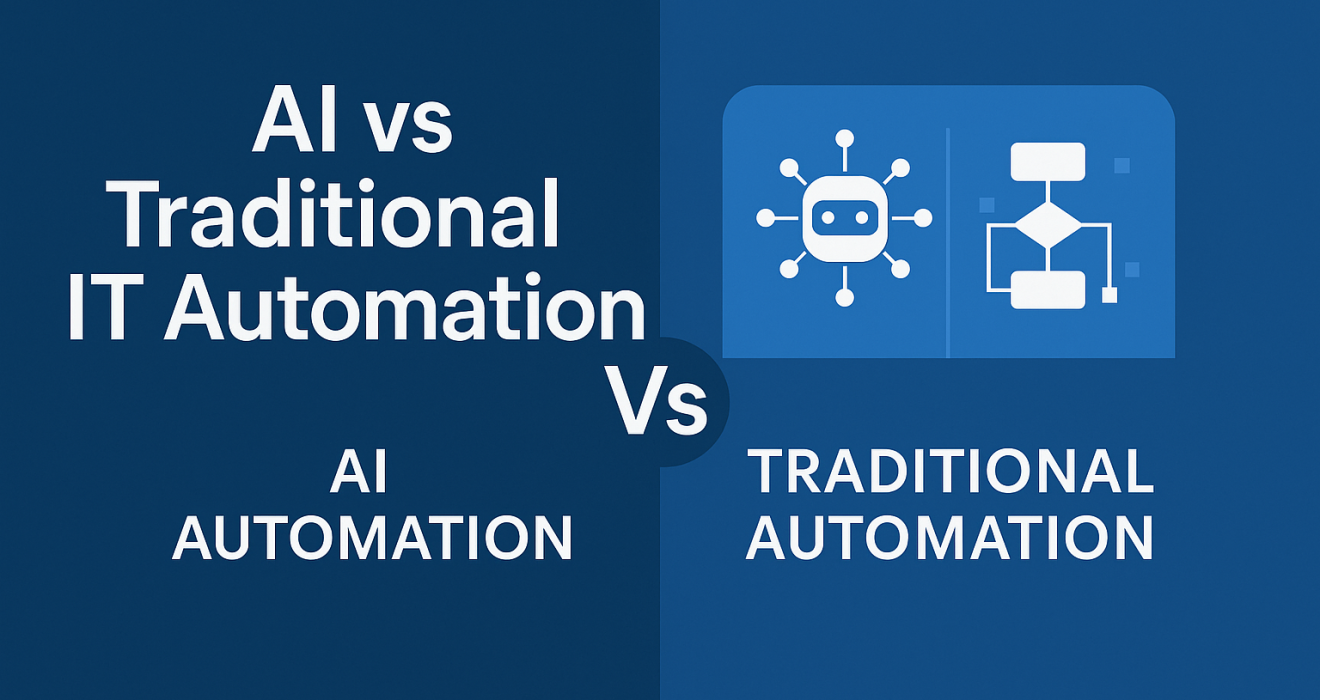🤖 AI vs Traditional IT Automation: What’s the Difference?
In the rapidly evolving world of Information Technology, AI vs traditional IT automation has become a hot topic for IT professionals and business leaders alike. While traditional automation relies on static rules and scripts, AI introduces smart, adaptive decision-making that can transform how systems operate. Understanding the difference between these two approaches is critical for any organization aiming to stay competitive, reduce manual work, and scale operations efficiently.
🔧 What Is Traditional IT Automation?
Traditional IT automation uses scripts, tools, and predefined workflows to execute routine tasks. These tasks are usually rule-based, meaning the logic is explicitly coded and doesn’t change unless modified by a human.
🔁 Examples:
Cron jobs for scheduled backups
Bash or PowerShell scripts for server setup
Automated software deployment pipelines
IT service desk ticket routing based on static rules
🟢 Pros:
Simple, predictable, and reliable
Easy to audit and troubleshoot
Low cost and widely supported
🔴 Cons:
No adaptability or “learning”
Breaks easily with unexpected changes
Requires constant manual updates to logic
📌 When Should You Use Each?
✅ Use Traditional Automation When:
Tasks are simple and consistent
You need high control and traceability
Data is limited or unavailable
Budget or skill constraints exist
✅ Use AI-Powered Automation When:
Tasks involve complex decision-making
You have access to quality historical data
Adaptability and scale are critical
Reducing human dependency is a goa
🚀 Real-World Example:
Traditional:
A scheduled script runs every night to restart services on low-memory servers.
AI-Based:
An AI model monitors system memory in real-time, identifies degradation patterns, predicts potential failures, and only restarts affected services when necessary — minimizing downtime and optimizing performance.
🔮 The Future: Hybrid Automation
While AI offers advanced capabilities, traditional automation isn’t going away. In fact, many organizations are adopting a hybrid approach, using traditional methods for basic tasks and AI for more dynamic or large-scale challenges.
By combining both, businesses can maximize efficiency, reduce costs, and stay ahead in a competitive IT landscape.
✅ Conclusion:
Understanding AI vs Traditional IT Automation helps IT teams make smarter decisions when choosing the right tool for their workflows.

